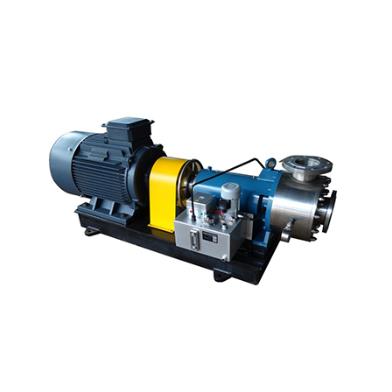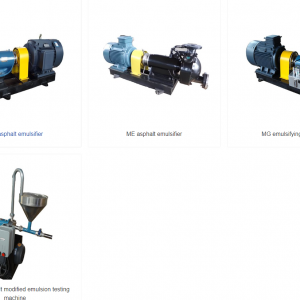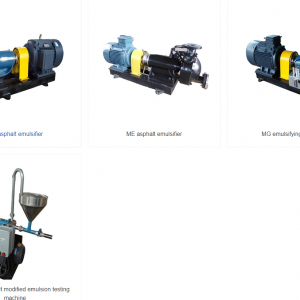Today, the colloid mill manufacturer Chenyangpump will introduce the installation and use of the colloid mill and help you understand the use process of the colloid mill. Interested partners may wish to take a few minutes to have a look together.
1. Connect the colloid mill feed hopper or feed pipe and discharge port, then connect the discharge circulation pipe, and then connect the cooling water (JM-L50a, b without cold water pipe system) and drain pipe.
2. Install the electric starting device for the colloid mill, (if possible, users can equip it with an ammeter, an indicator light, or a frequency converter, etc.) After connecting the power supply, pay special attention to the running direction of the start-up, and judge whether the colloid mill motor rotates in the normal direction. Or look from the diameter of the feed pipe to see if the direction is consistent with the rotation direction arrow of the 'red warning sign' on the colloid mill. Absolutely prohibit the colloid mill idling (lack of liquid in the cavity) and reverse.
3. When the colloid mill leaves the factory, the adjusted limit screw has been installed on the block of the equipment outlet, and the gap between the colloid mill and the grinding disc is at the optimal processing fineness interval. To adjust the gap between the grinding discs, first, loosen the upper limit screw of the outlet block, unscrew the two handles on the adjustment disc (dial) 'counterclockwise' without turning on the machine, and then turn the adjustment disc clockwise. When the disc feels a little resistance, it stops immediately. At this time, the scale on the adjustment disc is aligned with the reading of the pointer on the body, and the gap between the dynamic and static grinding discs is determined to be '0'. But remember the reading number on the dial circle, this number is not 0 degrees and the distance between the grinding discs is '0', and then reverse (counterclockwise) the adjusting disc for a few turns so that the gap between the dynamic and static grinding discs is slightly greater than 0. The scale of the adjustment dial is 0.01mm for each step forward and backward. Generally, when the colloid mill meets the fineness requirements of the processed materials, keep a certain distance between the colloid mill discs as much as possible, and at the same time lock the adjustment disc with the handle, and then adjust the upper limit screw of the feeding inlet block to ensure that the colloid mill is normal. operate.

4. After the colloid mill is connected to the cooling water, inject about 1-2Kg of liquid material or other liquid related to the processed material, and keep the wet material in the state of returning through the circulation pipe. Only then can the colloid mill be started, and the materials will be fed into the colloid mill for processing immediately after the operation is normal, and the idling colloid mill can also be exempted from this.
5. Before shutting down, add the appropriate amount of water or other liquids related to processing materials into the feeding hopper or leave in the cavity, and keep the wet materials in the state of returning through the circulation pipe. When the colloid mill is turned on, it is also necessary to keep a certain amount of wet material in the hopper in a reflowable state and put the material in immediately, otherwise it will damage the hard combined seal of the colloid mill and even cause leakage and burn the motor.
6. Pay attention to the load of the motor when processing materials, and reduce the feeding if the colloid mill is found to be overloaded.
7. When the colloid mill is in operation, never close the discharge valve to avoid leakage caused by excessive pressure in the mill cavity.
8. The colloid mill is a high-precision machine, with very little gap between the grinding discs and a fast rotation speed. Operators should strictly abide by their posts, operate according to regulations, stop the machine in time when faults are found, and start production after troubleshooting.
9. After the colloid mill is used, it should be thoroughly disinfected and cleaned inside the machine, so as not to allow materials to remain in the body, and to avoid damage to the machine due to hard mechanical bonding.
I hope that the above content can help you use the colloid mill better. For more information about the colloid mill, please refer to the following:



